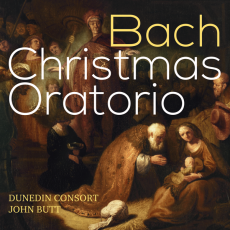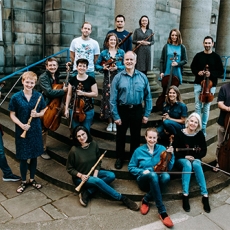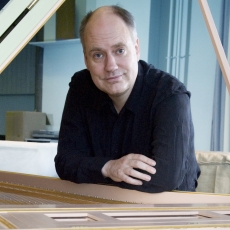Dunedin Consort - J.S. Bach: Christmas Oratorio - Andrew Benson-Wilson
The Dunedin Consort under their director (and noted Bach scholar) John Butt are amongst the most prominent exponents of Bach's music around. So this timely release of their take on the Christmas Oratorio is particularly welcome. With a distinguished group of period instrumentalists, and some outstanding vocal soloists, this is one of the most impressive interpretations I have heard. Whatever your religious beliefs, or lack of them, this music digs deep. John Butt's scholarly interpretations are an integral part of the Dunedin story and, for this recording, his study of the performing conditions of the first performances in Leipzig in 1734 led to decisions about the vocal forces for the recording.
As John Butt points out in his programme notes, Bach seems to have been sensitive to the work load of his singers and instrumentalists over the busy Leipzig Christmas period, and alternated grand cantatas (Cantatas 1, 3 and 6, all using trumpets and timpani) with more meditative and lighter scored ones (Cantatas 2, 4 and 5). Flutes and the bassoon are only used in the first part, the full compliment of four oboes only in Cantatas 2, horns only in Cantatas 4, while Cantatas 5 only has strings and oboes. John Butt (pictured) alternates his vocal soloists between the six Cantatas, drawing from a team of eight fine soloists, with Mary Bevan, Clare Wilkinson, Nicholas Mulroy and Matthew Brook in Cantatas 1, 3, 6 and Joanne Lunn, Ciara Hendrick, Thomas Hobbs and Konstantin Wolff in Cantatas 2, 4, 5. For the more powerful cantatas (1, 3, and 6), Butt adds four additional singers to the ripieno chorus. Conscious of Bach's need to rest soloists, he uses separate singers for this ripieno, rather than the other group of four soloists. There is no evidence that this was the case in the original performance, but we do know that Bach added singers to the core of soloists in other similarly powerful works of the period.
Whilst this approach is based on an intelligent interpretation of Bach' performing practice, it also has the benefit of providing a more varied vocal texture. The cantatas in the Christmas Oratorio are re-workings of earlier secular cantatas, probably written for performance in the Collegium Musicum. As such, they were almost certainly intended for a group of solo singers, rather than a choir. Using such small forces means that the individual voices are distinct in their solos as well as in the chorales and choruses. This brings an attractive intimacy to the recording.
The singing is superb throughout, with some particularly special moments from each, for example: Thomas Hobbs' clean articulation in Frohe Hirten, eilt, ach eilet; Ciara Hendrick's excellent control of her natural vibrato on the long notes of Schlafe, mein Liebster, geniebe der Ruh; Nicholas Mulroy's sensitive singing of recitatives (for example in Und sie kamen eilend) and his gorgeously impassioned So geht! Genug, mein Schatz geht nicht von hier; Clare Wilkinson's exquisite Schliebe, mein Herze, dies selige Wunde, aided by an similarly outstanding violin solo from Cecilia Bernardini; Joanne Lunn's clear and focussed singing of the lovely Floesst, mein Heiland, floesst dein Namen, with its distinctive echo sections and lyrical oboe solo; Mary Bevan's powerful Nur ein Wink; and Matthew Brook's imposing Grosser Herr. .
There is some spectacular instrumental solos from the likes of Cecilia Bernardini, violin, Alex Bellamy, oboe, Anneke Scott and Joe Waters, horns, and excellent continuo playing from Jonathan Manson, cello, Stephen Farr, organ, and John Butt, harpsichord. Such is the immediacy of the Linn recording that some of the mechanics of the woodwind instruments (probably the bassoon) can be occasionally heard as a tiny background clatter. Like action noise from an historic organ, this doesn't unduly concern me - but it might you.


